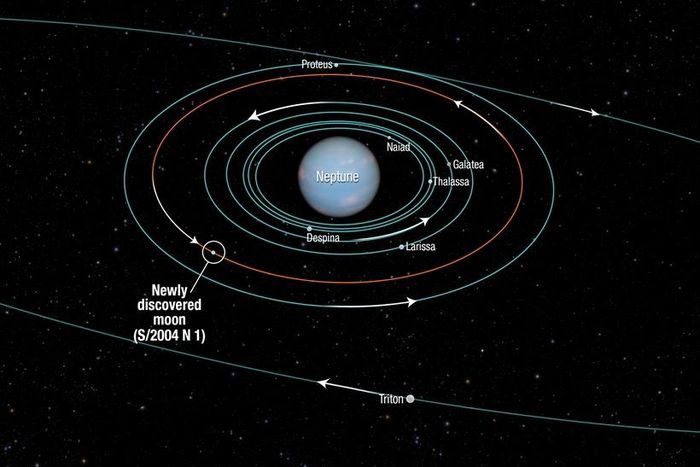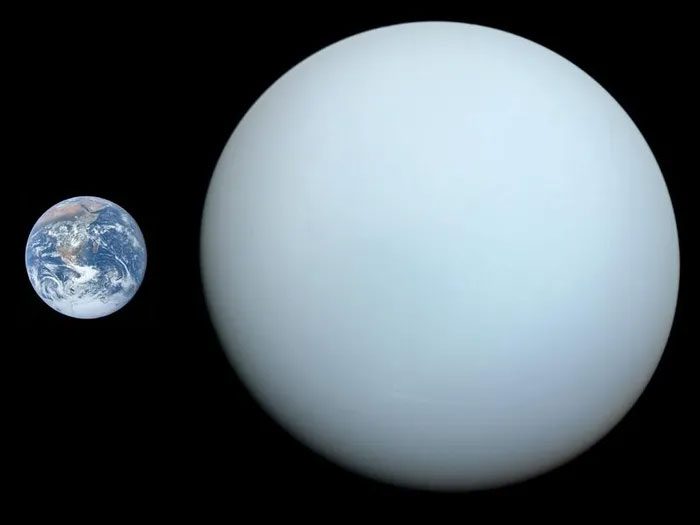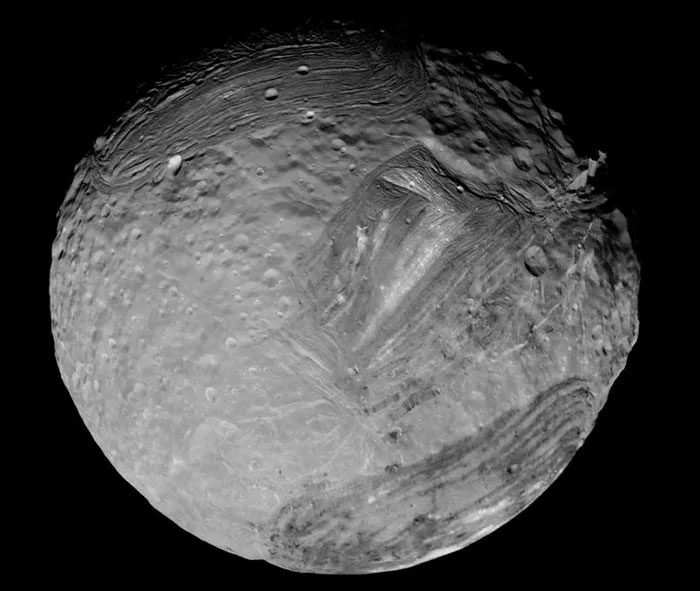Astronomers have discovered 3 previously unknown moons in the Solar System, including 2 moons orbiting Neptune (the 8th planet in the Solar System) and 1 moon orbiting Uranus (the 7th planet in the Solar System).
The small moons, located far from their respective planets, were discovered using powerful telescopes in Hawaii and Chile, and were announced by the International Astronomical Union (IAU) on February 23.

The orbits of some moons of Neptune. (Source: NASA/ESA).
With this latest discovery, Neptune now has a total of 16 known moons, while Uranus has 28.
One of Neptune’s newly discovered moons has the longest known orbital period.

The size of Earth compared to Uranus. (Source: NASA).
Astronomer Scott Sheppard from the Carnegie Institution for Science in Washington, who is part of the team conducting this discovery, stated that it takes about 27 years for the moon to complete an orbit around Neptune, the farthest giant ice planet from the Sun.
Meanwhile, the newly discovered moon of Uranus is estimated to have a diameter of only 8 km, making it potentially the smallest moon of the planets in the Solar System.

Miranda, a moon of Uranus, has a diameter of 470 km and is one of the smallest spherical objects in the Solar System. (Source: NASA/JPL/Ted Stryk).
“We think there may be many more smaller moons yet to be discovered in the Solar System,” noted astronomer Scott Sheppard.
In September 2003, the IAU announced the discovery of 2 of the smallest moons found orbiting Uranus. These new moons have diameters ranging from 12 to 16 km and were discovered by NASA’s Hubble Space Telescope.


















































